Foam rolling focuses on applying physical pressure onto myofascial tissue restrictions. The pressure gets rid of associated pain, increases circulation, and increases motion by activating the stretch reflex of the muscles and overlying fascia. Reduction in soft tissue tension decreases pain, restores normal muscle length tension relationships and improves function.
The use of foam rollers is fast, easy and cheap. A foam roller goes for around $25, which is much cheaper than a personal massage therapist. The recommended use for a foam roller is one to two minutes on each muscle. When foam rolling, it is important that the muscle is felt before hand in order to find the trigger point that is the source of pain. While rolling the runner should stop for 10-15 seconds over the trigger point to try and achieve a muscle spindle release.
The foam roller is most commonly used for the lower extremity muscles but can be used for almost every muscle throughout the body. A foam roller can be used either before or after an activity starts. It is important that before foam rolling a general warm up be performed (bike, light jog, jumping jacks, etc.), as a muscle should not be stretched cold.
In this day and age runners are always looking for the competitive edge. Flexibility and muscle function are detrimental aspects to the performance of all athletes. The foam roller combined with a dynamic warm up can be used as a great tool to help runners to stay healthy and achieve greatness.








